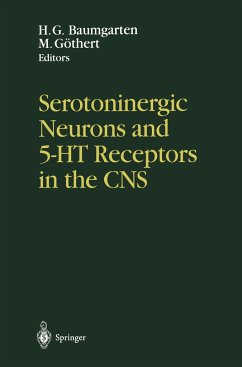In 1966, Vittorio Erspamer, the editor of the first monograph within the Handbook of Experimental Pharmacology series that dealt with 5-hydroxy tryptamine (Vol. XIX) wrote in the Preface: "In a decade of intense and dedicated work, an immense amount of experimental data has been collected, the significance of which . . . has spread into all fields of biology and medi cine . . . ". Three decades later, a dramatic further increase in our knowledge of all neuroscientific aspects of the serotoninergic system in the CNS has been achieved, and we are witnessing persisting interest in the biology of serotonin of scientists working in various basic biomedical and clinical disciplines. The scientific advance was made possible by significant improvements in analytical and morphological technologies of high sensitivity and cellular/subcellular resolution (e. g. , patch clamp techniques, in vivo microdialysis, electrophysi ological recording techniques, quantitative ligand autoradiography, immuno histochemistry, cytochemistry, catalytic enzyme histochemistry, and PET / SPECT techniques) and in molecular biology (e. g. , in situ hybridization, PCR cloning, DNA transfection studies, and targeted gene disruption). Particular progress has been made in the anatomy, physiology, and pharmacoogy of ' serotoninergic neurons and their modulatory role in brain functions, in s ~roto nin receptors and their transduction mechanisms, and in the potential role of serotonin in neuropsychiatric diseases, such as eating disorders, antisocial personality disorders, obsessive-compulsive disorder, seasonal affective disor der, and major depression.
Hinweis: Dieser Artikel kann nur an eine deutsche Lieferadresse ausgeliefert werden.
Hinweis: Dieser Artikel kann nur an eine deutsche Lieferadresse ausgeliefert werden.








